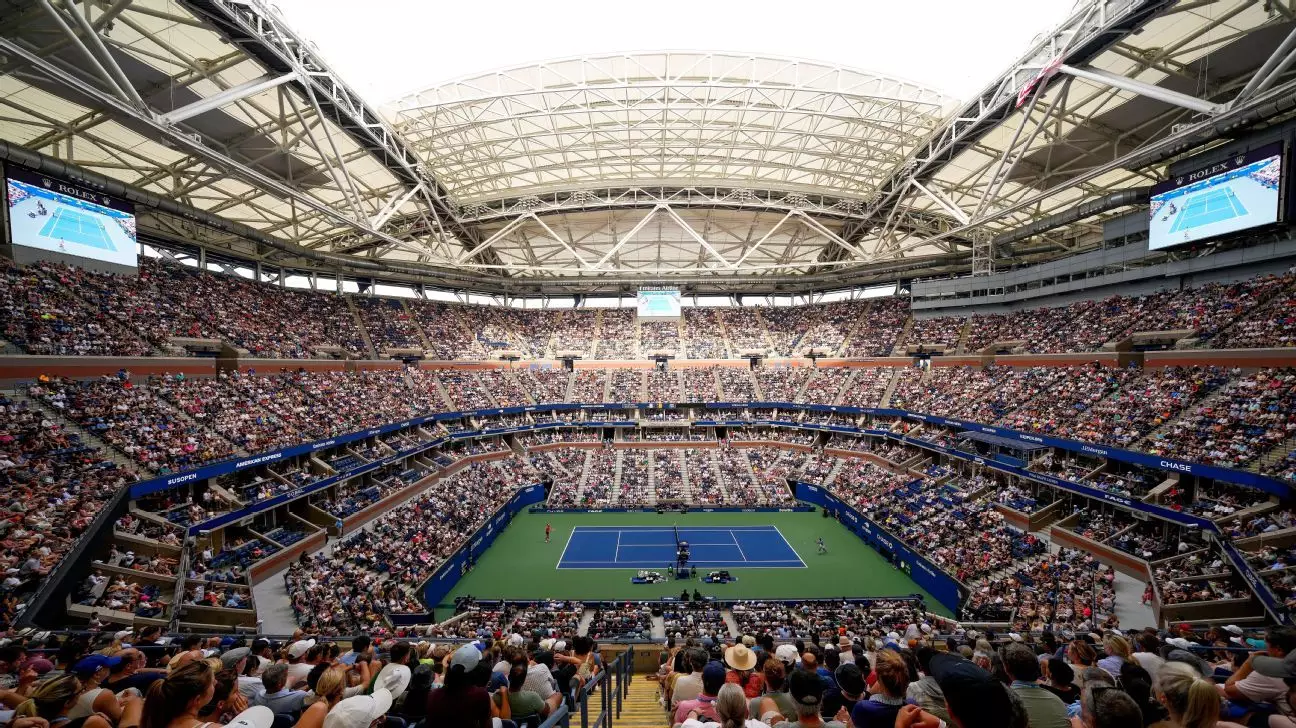The Arthur Ashe Stadium, a centerpiece of American tennis, is set to undergo a remarkable transformation, with an eye-popping $800 million investment that marks a watershed moment in the history of the US Open. Announced by the U.S. Tennis Association (USTA), this monumental project is not merely a facelift; it aims to revolutionize the entire experience for both players and spectators. What’s striking, and perhaps admirable, is that the USTA is tackling this ambitious renovation without external financial assistance from the city government, showcasing an independence that fosters innovation within a storied institution.
A Ripe Opportunity Amidst Controversy
However, this grand vision comes at a time fraught with tension and dissatisfaction among professional players. A class-action antitrust lawsuit filed against the major tennis tournaments, including the US Open, illustrates a growing discontent among the stars of the game. The players, represented by a coalition co-founded by Novak Djokovic, argue that while the Grand Slams raked in a staggering $1.5 billion in 2024, the players received a mere fraction of that revenue—between 10% and 20%. This disparity raises questions about the allocation of resources in a sport teeming with lucrative sponsorship deals and soaring ticket prices.
This situation beckons a crucial conversation about equity in professional sports and whether the USTA’s investment is a step in the right direction or merely a distraction from the pressing issues of fair remuneration and players’ rights. Instead of solely focusing on the stadium’s opulence and the luxurious experience it promises for fans, one might wonder if the USTA is sidestepping the greater economic concerns that plague players who are the lifeblood of these prestigious events.
The New Era of Player Facilities
Importantly, the infrastructure changes coming to the Billie Jean King National Tennis Center include a new $250 million player performance center. Nestled adjacent to practice courts, this facility aims to enhance athlete experience and performance, which is undeniably critical for the sport’s future. With upgraded locker rooms, lounges, and additional courts, it’s a positive development that acknowledges players’ needs. The aims of creating larger, more functional spaces signal an understanding of the demands placed on modern athletes.
Yet, as the USTA expands the stadium’s seating capacity from 3,000 to 5,000 at courtside while maintaining the total capacity at around 24,000, one must ponder: is the USTA prioritizing the entertainment experience over the player’s welfare? The aura created by the crowd can’t be undervalued, but ultimately, ensuring athletes are well-supported should be the priority in any substantial renovation.
Visions for the Future
The upcoming changes will include revamped entrances, improved dining options, and enhanced general amenities like escalators and restrooms. In theory, these upgrades enhance the commercial viability of the US Open, but it also raises the question of sustainability. As the tournament embraces a more luxurious atmosphere, the challenge will be balancing this wealth of opulence with the sport’s core values of accessibility and fairness.
The first main draw play of the year will shift to a Sunday start, breaking a tradition that has been in place since the US Open’s inception in 1968. Such decisions reflect a shift in strategic thinking by the USTA, aiming to be more inclusive and to adapt to the evolving fan base. Nevertheless, as they navigate these waters, it’s pivotal that they remain attuned to the voices of the athletes and the underlying ethos of fairness and competition that define tennis.
Each of these initiatives reflects a dynamic restructuring aimed at enriching the cultural and economic fabric of tennis but also solicit a wariness regarding the broader implications of such grand investments. The true test for the USTA will be to navigate this duality effectively, ensuring that the sport does not lose sight of its foundational values amidst its desire for growth and modernization.

